5. Primer (2004)
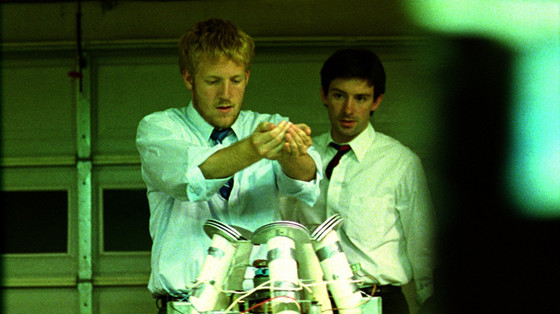
By their very nature, time travel movies are going to be inherently complex. Keeping track of a character’s position in time, and the consequences of time travel, multiply with every new trip to the past or future that takes place in a story. But Primer went a few steps further by engineering a time travel movie that purposely keeps its viewer disoriented by the multiplicity and complexities that time travel would incur in the real world.
When two engineers working on an electromagnetic field that theoretically could reduce an object’s weight accidentally discover a method of time travel, they build two boxes that would allow them to travel back in time. Initially using this technology to play the stock market, and then to fix personal dilemmas that occur, both men eventually become rivals, with one wanting to further use the box for his personal gain and the other attempting to stop the experiment from ever occurring.
Shane Carruth–who wrote, directed, produced, and starred in Primer, his first film–created a cult sci-fi hit that has been noted for its complex structure and experimental narrative. Using time travel as a narrative device itself, Primer is a film that never fully explains itself to the audience, which has left many viewers discussing its ultimate structure and meaning since its release.
4. Inception (2010)
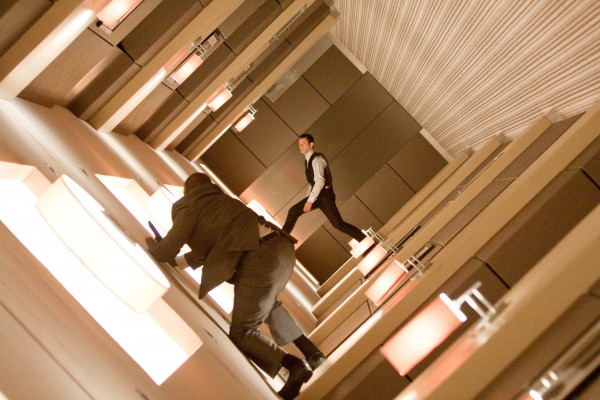
One of the most critically acclaimed and popular sci-fi films of all time is also one that has perplexed audiences since its release–which has only heightened its popularity. Following the enigmatic business of thief Cobb (Leonardo DiCaprio), who specializes in corporate espionage by entering the subconscious of his targets using experimental technology to steal secrets, from its outset Inception has a complex structure.
This only deepens as the audience watches Cobb and his crew exploring and explaining the mechanics of the dream world, which allows for the world to fold onto itself and impossible Escher-like constructions to occur. When they dive into the layers of a target’s subconscious to plant an idea but find themselves battle a security team–and Cobb his own personal demons–in this surreal environment, the audience is left wondering just what is real and whether they’re in reality by the end of the film.
Christopher Nolan is a master at complex narrative structures and playing sleight-of-hand tricks on the audience, and in this pursuit he’s never been more successful than with Inception.
Part of this comes from the nature of the realities Inception takes place in: largely taking place in the subconscious and other unreal spaces, there is such little time the film spends in “reality” that the audience can never quite tell if what they’re watching is actually happening–and largely it isn’t, even when it is. Its ambiguous closing scene only kept audiences arguing about whether or not Cobb is in reality–and one that hasn’t abated to this day.
3. The Adventures of Buckaroo Banzai Across The 8th Dimension (1984)
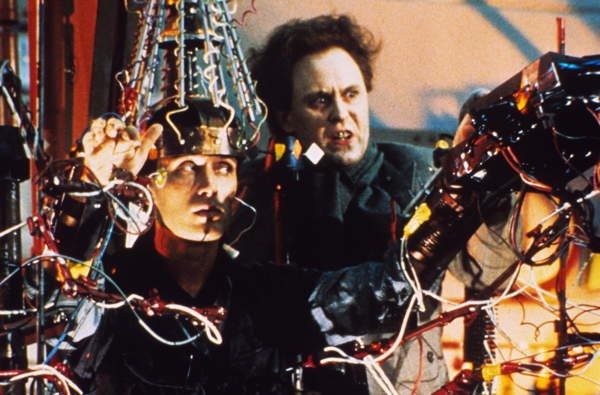
“What’s that watermelon doing there?” asks New Jersey (Jeff Goldblum) to Reno, both members of The Hong Kong Cavaliers, Buckaroo Banzai’s personal team of adventurers/rock stars, in the 1984 movie The Adventures of Buckaroo Banzai Across The 8th Dimension. It’s a good question but it’s ultimately irrelevant, especially since the first time you watch this movie you’ll have so many more questions as to what’s happening at any given moment.
Made in such a way that presupposes the audience would be well-familiar with the fictional, original, and first-time character Buckaroo Banzai (Peter Weller)–scientist, surgeon, rock star, and adventurer–this film starts with no exposition as to what’s going on and goes off from there. Purposefully constructed this way, W.D. Richter’s The Adventures of… bewildered audiences upon release but has since become a cult classic.
The first time you watch it, you’ll either find it enthralling that you haven’t been provided any reference point as to who these characters are and what’s going on or you will turn it off in frustration. By the third or fourth rewatch, after you finally put this puzzle of a movie together, you’ll understand what’s going on and appreciate this totally unique sci-fi action comedy–except for why the watermelon’s there. That’s one thing the film never explains.
2. Solaris (1972)
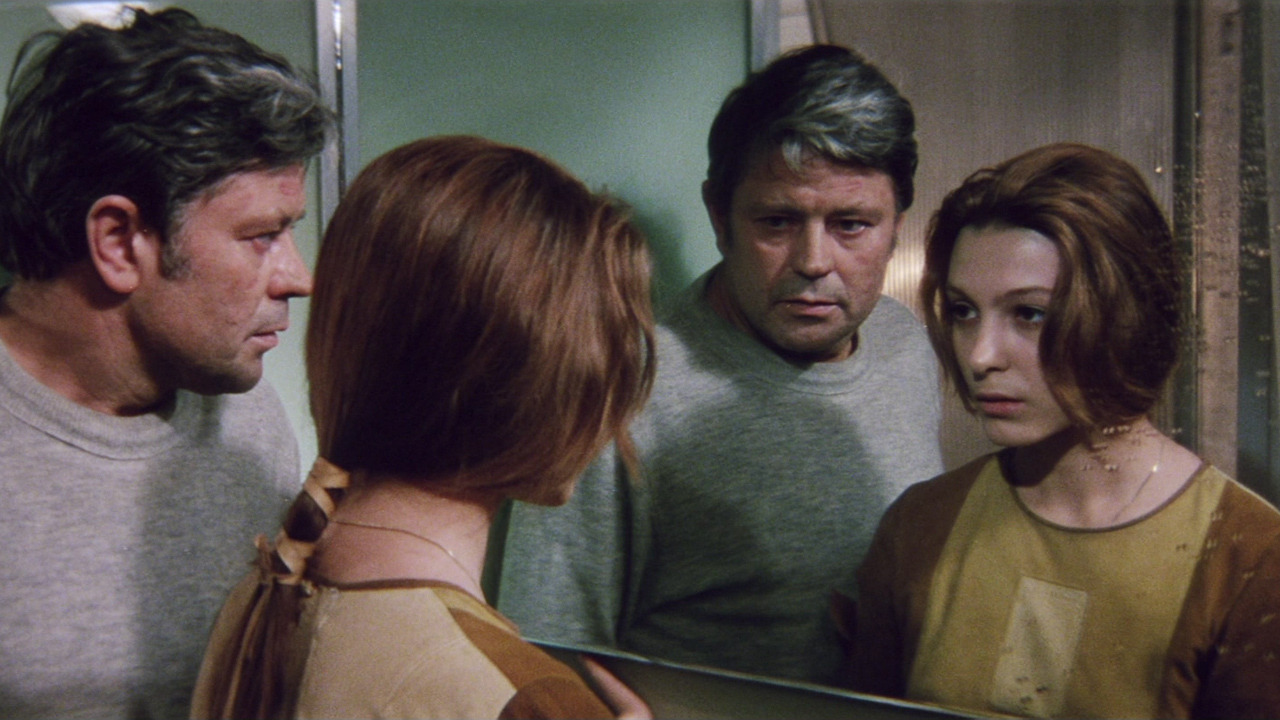
Andrei Tarkovsky was one of Russia’s greatest directors, with many of his films–which centered on metaphysical and philosophical investigations of meaning, long unbroken takes, and unconventional dramatic structures that relied as much on character’s memories and dreams as much on the “actual” plot–often listed as some of the best ever made.
His entry into the sci-fi canon was bound to be complex, and with 1972’s Solaris, Tarkovsky made one of the most influential and enigmatic sci-fi films of all time. While the film takes place on a space station that’s orbiting the (fictional) planet of Solaris, the story mostly relies on the thoughts and emotional states of the scientists onboard studying the planet below. Centered around a psychologist who has been sent to the station to check on the emotional state of the astronauts, who have been sending confusing and disturbing messages back to Earth.
Upon arrival, he finds the crew behaving bizarrely and that a friend of his stationed on the Solaris station has committed suicide. The cause of the crew’s behavior becomes clear once the psychologist meets his late wife on-board, who is by all accounts real, but disturbed by this he sends her out on a space capsule…only she returns once again. Finding that these sorts of beings, whom the crew call “visitors,” have been the source of the crew’s upset since they take the form of people in their memories, the psychologist begins to work out what exactly these creatures are and why they’re appearing.
Memory, dreams, and the nature of life and love are not themes Western audiences expected to find in a sci-fi film in 1972, but Tarkovsky elevated the genre with Solaris into something more far-reaching and mysterious. Solaris doesn’t provide easy answers to the questions and situations it raises, but exploring the questions becomes a satisfying journey in itself when watching this film.
1. 2001: A Space Odyssey (1968)
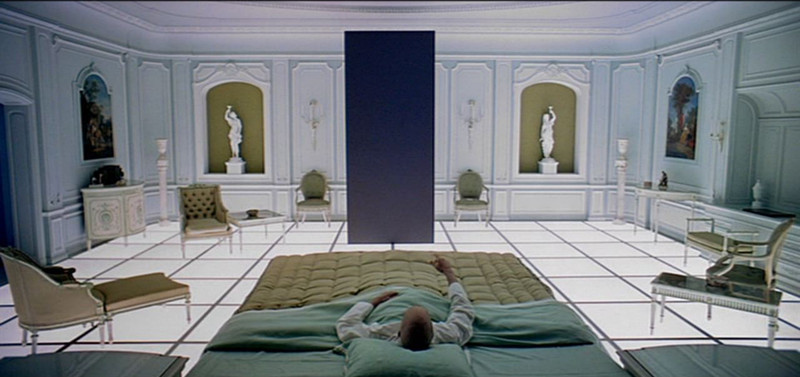
One of the most influential sci-fi films ever made, Stanley Kubrick’s masterpiece 2001: A Space Odyssey can often come across as wilfully obscure to viewers. Starting at the dawn of man before cutting to 2001, where mankind is now travelling into space, before ending with a dazzling 20-minute wordless denouement that replicates the psychological, psychedelic experience an astronaut has after making contact with a mysterious alien artefact, the total effect of 2001: A Space Odyssey can floor first-time viewers with its massive scope and difficult-to-discern meaning.
Adapted from Arthur C. Clarke’s eponymous novel, the film–particularly its ending–makes more sense if one has read the novel, but Kubrick also freely adapted and interpreted the source material as he pleased. The visual effects of the film notwithstanding, which represented a massive leap forward in that field and setting a new standard for future sci-fi films to live up to, Kubrick added his signature open-to-interpretation touch to the movie.
The end of the film–in which an astronaut is pulled into a colorful vortex, which leads him to experience surreal events that include witnessing himself as an old man until reappearing in orbit around Earth as a newborn child wrapped in an orb of light–has left audiences scratching their heads as to its meaning for nearly 50 years.
Author Bio: Mike Gray is a writer whose work has appeared on numerous websites and maintains a TV and film website at MeLikeMovies.com.